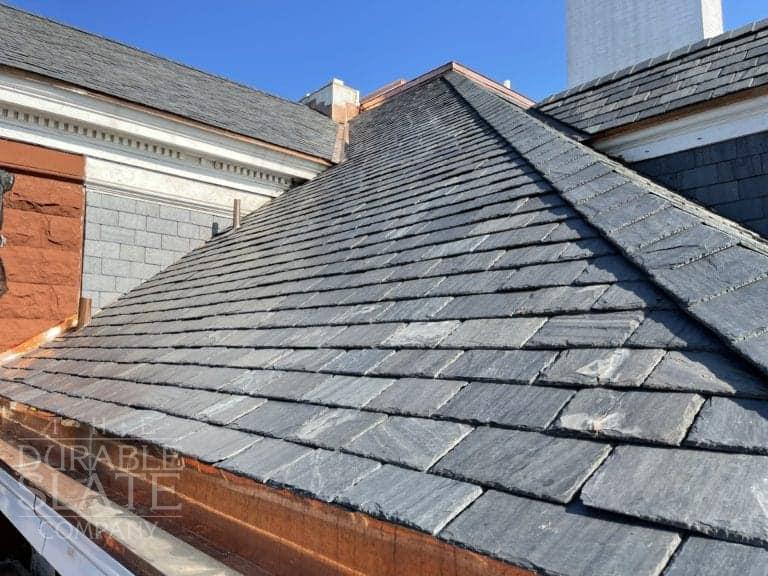The Benefits of Dealing With Gainesville FL Roofing Companies
The Benefits of Dealing With Gainesville FL Roofing Companies
Blog Article
Best Practices for Ensuring Proper Roof Covering Air Flow
Ensuring proper roof ventilation is critical for the longevity and efficiency of a roof system. A well balanced intake and exhaust air vent ratio, generally 1:300, plays a critical duty, with intake vents ideally placed at the lower side of the roof for trendy air access and exhaust vents at the top for cozy air exit. Regular evaluations to determine obstructions and keep clear air flow are paramount. Additionally, keeping insulation away from vents is essential to avoid air flow constraint. Recognizing these foundational components establishes the stage for more detailed understandings right into installation and upkeep techniques that can considerably improve your roofing system's performance.
Understand Air Flow Essentials
Properly comprehending air flow essentials is important for making certain the longevity and efficiency of roof covering systems. Efficient air flow reduces wetness buildup and temperature level extremes in the attic room, both of which can cause substantial structural damage gradually. A well-ventilated roof covering aids in stopping common problems such as mold and mildew development, wood rot, and ice dams, which can endanger the integrity of the roofing materials and the underlying structures.
The key goal of ventilation is to facilitate the motion of air, permitting a regular exchange in between the interior and exterior environments. This balance is accomplished via a mix of consumption and exhaust vents that collaborate to keep optimal airflow. Intake vents, generally situated along the soffits or eaves, permit fresh air to go into the attic room area, while exhaust vents, usually located at or near the roof ridge, make it possible for warm, humid air to leave.
Key factors affecting the effectiveness of roof ventilation consist of correct positioning, sufficient sizing, and ensuring that both consumption and exhaust vents are unblocked. Routine examination and maintenance are crucial to determine possible obstructions, damage, or inadequacies in the air flow system, consequently guarding the roof covering's efficiency and longevity.
Sorts Of Roof Covering Vents
Roofing vents play an essential function in keeping efficient attic room ventilation and, by expansion, the total health of the roof. Various types of roofing vents are available, each with unique benefits tailored to details roofing needs. Ridge vents, for instance, are installed along the roofing system's peak, enabling warm, damp air to leave from the attic room. They offer continuous ventilation and blend seamlessly with the roofline, making them both effective and cosmetically pleasing.

Soffit vents are set up under the eaves and operate in tandem with roof covering vents to make sure a well balanced consumption and exhaust system. By allowing cooler air to go into from below, soffit vents facilitate the expulsion of hot air through upper vents. Gable vents, located on the exterior wall surfaces of the attic room, offer another reliable service, specifically in homes with gable roofing systems.
Analyze Your Present Air Flow

Next, consider the age and condition of your roof covering materials and air flow elements. Older systems may not adhere to existing building regulations or may have deteriorated with time, minimizing their effectiveness. Conduct an extensive exam to recognize any signs of damage, such as rust, damages, or gaps that could endanger the system's efficiency.
Additionally, determine the attic room temperature level and moisture degrees. High temperatures and humidity can show inadequate ventilation.
Setup Best Practices
Effective installation of roof ventilation systems is paramount for making sure optimum efficiency and durability. Proper installment begins with understanding the particular air flow demands of the roofing system and the building it covers. This includes calculating the right proportion of intake to wear down vents, commonly adhering to the 1:300 guideline, which specifies one square foot of ventilation for each 300 square feet of attic floor room.

The placement of vents is equally important. Intake vents ought to be installed at the roof's lower side, frequently in the soffits, to permit amazing air to enter. Exhaust vents, on the various other hand, ought to be mounted near or at the roof covering's top to review facilitate the departure of warm, wet air. This produces an all-natural airflow that helps preserve temperature level and wetness equilibrium within the attic room space.
Seal all vent links carefully to avoid air leakages and possible water infiltration. Use high-quality products and comply with supplier standards to ensure toughness and performance. In addition, incorporating ridge vents with baffles can considerably improve air movement performance by preventing wind-driven rain and snow from entering the attic.
Ultimately, exact setup of roof covering air flow systems minimizes possible concerns such as mold and mildew growth, ice dams, and architectural damages, ensuring the roofing system's stability and the building's overall health.
Regular Maintenance Tips
Consistency in maintenance methods is basic to making sure the lasting efficiency of roof covering ventilation systems. During these examinations, ensure that vents are complimentary of debris, nests, and various other blockages that might restrain air flow.
Utilize a soft brush or a vacuum to get rid of dust and particles from consumption and exhaust vents. Be mindful not to damage the air vent displays or louvers throughout the procedure.
Proper insulation is similarly crucial. Make sure that attic insulation does not obstruct the vents, as this can badly limit airflow. If any type of insulation has actually shifted or settled, rearrange or replace it to keep an efficient obstacle.
Last but not least, change any kind of damaged or missing out on elements immediately. Busted vents, cracked shingles, or worn-out blinking can all add to poor ventilation and needs to be dealt with without delay. Normal maintenance guarantees that the roof air flow system works efficiently, a fantastic read consequently expanding the life expectancy of the roof itself.
Final Thought
Making certain correct roof air flow is critical for preserving the effectiveness and longevity of a roof system. Adherence to the 1:300 intake and exhaust vent proportion, coupled with the calculated placement of vents, is important.
A balanced intake and exhaust vent ratio, generally 1:300, plays a critical function, with consumption vents preferably positioned at the lower edge of the roof for great air entry and exhaust vents at the top for warm air departure. Intake vents, usually situated along the soffits or eaves, allow fresh air to enter the attic space, while exhaust vents, usually situated at or near the roofing ridge, make it possible for warm, humid air to run away.
Soffit vents are set up under the eaves and job in tandem with roof vents to guarantee a balanced intake and exhaust system. By enabling cooler air to go into from below, soffit vents facilitate the expulsion of hot air see this website via upper vents. Adherence to the 1:300 intake and exhaust air vent proportion, paired with the strategic positioning of vents, is vital.
Report this page